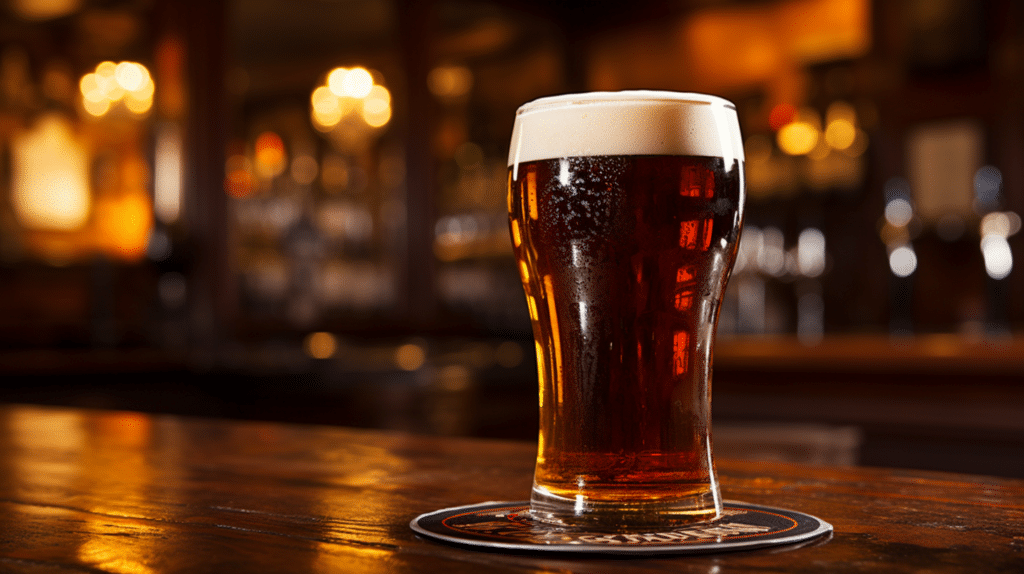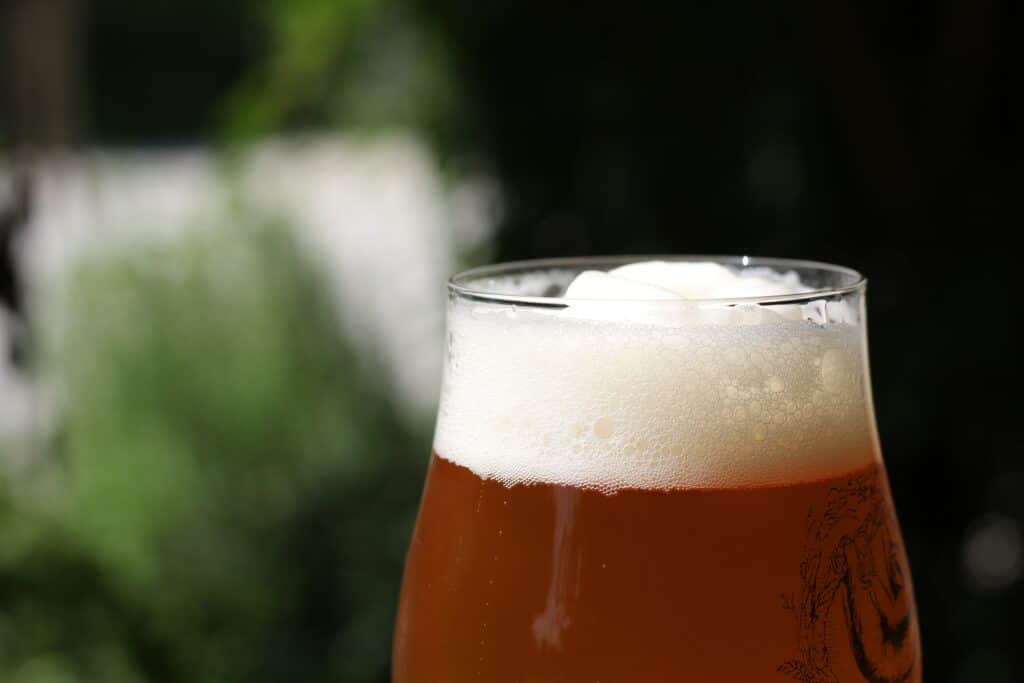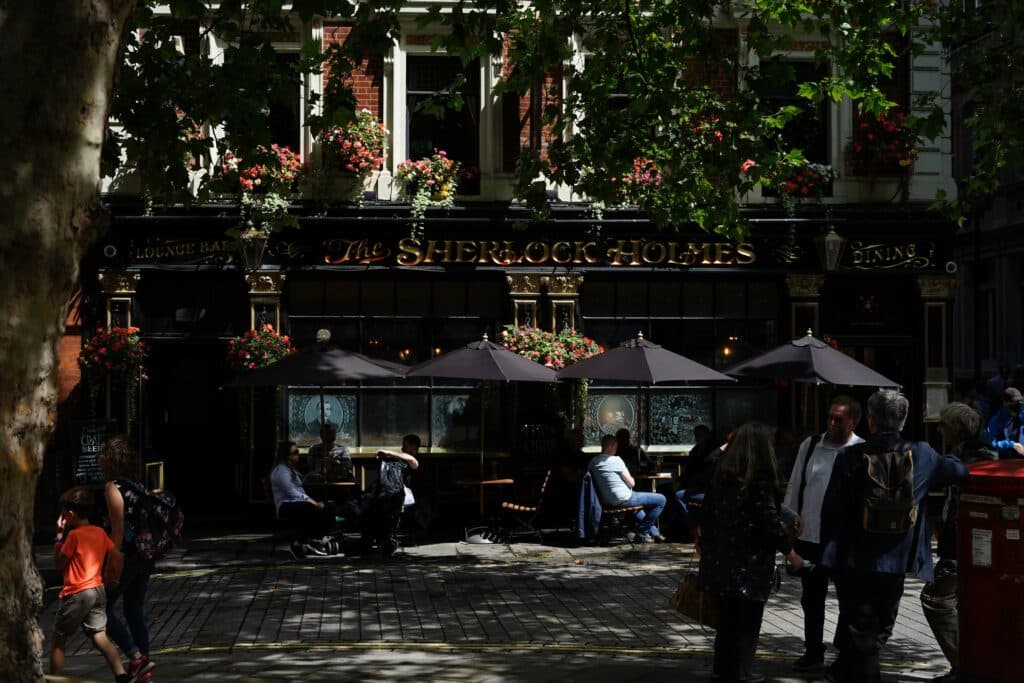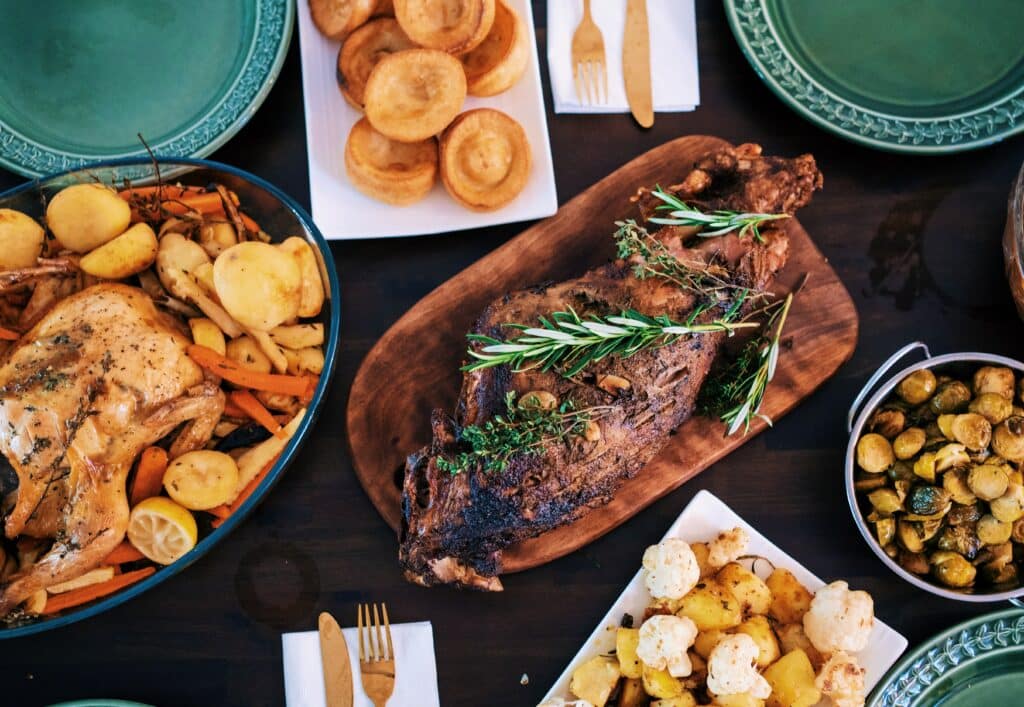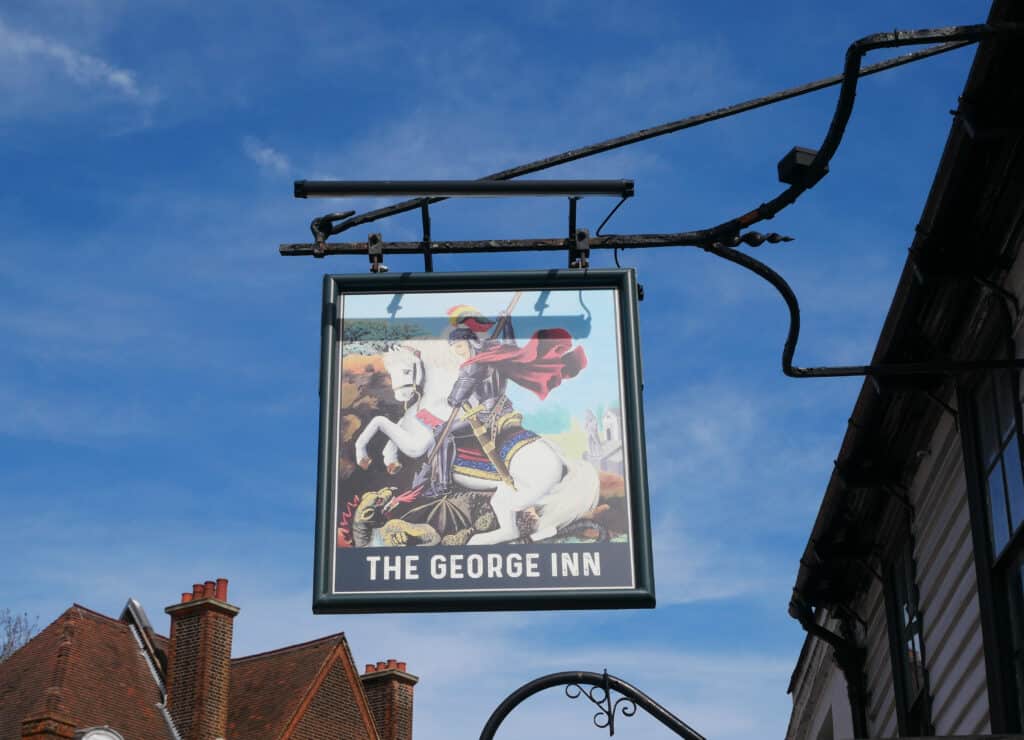Disclaimer: This post may contain affiliate links, from which I may earn a small commission at no extra cost to you. Thank you for supporting Ale Affair.
When you step into an English pub, a common request you might overhear is “a pint of bitter, please”. A “pint of bitter” refers to a traditional British style of beer served in a pint-sized glass or mug. Bitter is a term that encompasses a range of pale ales, characterised by their varying degrees of hop bitterness. The style has its roots in the United Kingdom, where it has been a staple of British pub culture for centuries. Let’s find out more!
The British Signature: How the Pint of Bitter Defines UK Brewing
The term “bitter” comes from the distinct hop bitterness that contrasts with the malt sweetness, a characteristic feature of these ales. Despite the name, bitters are not overly bitter; the name simply distinguishes them from other less hoppy beers available in the UK, such as milds or lagers. Bitter is traditionally served from a cask (cask ale) through a hand pump at cellar temperatures, which can enhance its flavour and aroma, making it a smooth and delicious drink.
Bitters are typically divided into several subcategories, including:
- Ordinary Bitter: The lightest in terms of alcohol content, usually between 3% to 3.8% ABV (Alcohol By Volume). It’s easy-drinking with a balance of malt sweetness and hop bitterness.
- Best Bitter: A step up in terms of intensity and alcohol content, usually between 3.8% to 4.6% ABV. It offers a more pronounced malt and hop flavour.
- Strong Bitter (or Extra Special Bitter – ESB): The strongest of the traditional bitters, with ABV ranging from 4.6% upwards, sometimes reaching over 6%. These offer a richer, more complex flavour profile, with a noticeable hop bitterness balanced by sweet malt.
Bitter became especially popular in Britain during the 19th century, partly due to the Industrial Revolution. As workers moved into urban areas, pubs and beers became central to the community, serving as a place for relaxation and socialisation after long hours in the factories. Bitter, being flavourful yet moderate in alcohol content compared to some other styles, was perfect for this setting. It allowed workers to enjoy a pint or two without becoming overly drunk, making it a staple of the British pub culture.
Interestingly, the development of the railway network in the UK during the same period allowed brewers to distribute their beer more widely, leading to the emergence of regional styles and the spread of bitter’s popularity across the country. The combination of social change, technological advancement, and the unique qualities of bitter itself helped cement its place as a quintessential British beer.
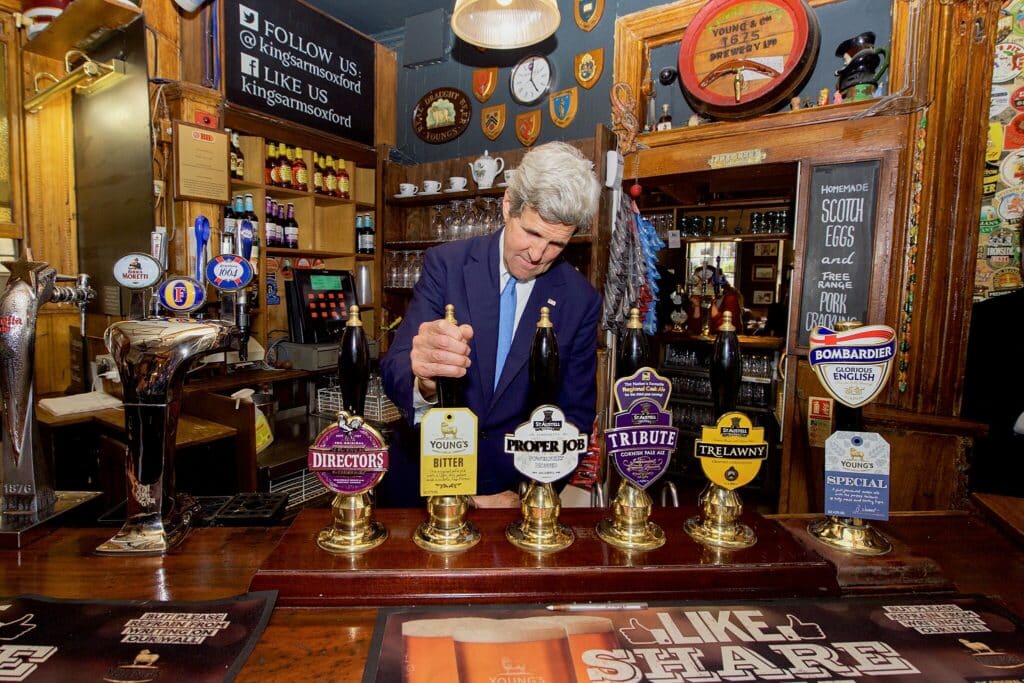
How are Bitters Brewed?
For the all-grain brewer interested in crafting a traditional British bitter, the choice of base malt is straightforward and essential: well-modified British pale ale malt is almost exclusively used. This type of malt forms the backbone of the bitter, providing the characteristic biscuity and slightly sweet foundation that is so beloved in these ales.
Brewing a pint of bitter, like other types of beer, involves several key steps: malting, mashing, boiling, fermenting, conditioning, and serving. Here’s an overview of the process tailored to brewing a traditional British bitter:
Malting
- Grains (usually barley) are soaked in water, allowed to germinate, and then dried in a kiln. This process develops the enzymes required to convert the grain’s starches into fermentable sugars. The level of roasting can affect the colour and flavour of the beer; bitters typically use lightly roasted malts to achieve their characteristic amber hue.
Mashing
- The malted grains are then ground into a coarse powder known as grist and mixed with hot water in a mash tun. This process, called mashing, activates the enzymes, converting the starches into sugars, resulting in a sweet liquid known as wort. The temperature and duration of the mash can influence the beer’s body and sweetness.
Boiling
- The wort is transferred to a kettle and boiled, typically for about an hour. Hops are added at various stages during the boil to impart bitterness, flavour, and aroma. Bitters are known for their balanced hop profile, so the quantity and type of hops used are crucial. Early additions contribute to bitterness, while later additions focus on aroma and taste.
Fermenting
- After boiling, the wort is cooled to a temperature suitable for yeast to be added. The type of yeast used is essential for the beer’s character. For bitters, ale yeast (a top-fermenting yeast) is used, which ferments at warmer temperatures (around 15-24°C or 59-75°F) compared to lager yeast. The yeast converts the sugars in the wort into alcohol and carbon dioxide, producing beer.
Conditioning
- Once fermentation is complete, the beer is conditioned. This can happen in the same vessel as fermentation, or the beer can be transferred to a different vessel (or even bottled) for conditioning. Conditioning allows the flavours to mature and can vary in time from a few days to several weeks or more. Traditional British bitters are often conditioned in casks and undergo secondary fermentation, contributing to their characteristic taste and gentle carbonation.
Serving
- Bitters are traditionally served at cellar temperature (around 11-14°C or 52-57°F), which can highlight their flavours and aromas more effectively than colder temperatures. In many British pubs, bitters are served directly from the cask without additional carbonation, using a hand pump (beer engine), which adds to the distinctive character of the drink by providing a smooth texture and allowing the subtle flavours and aromas to shine.
This process can be adjusted in various ways to create distinct subcategories of bitters, such as Ordinary, Best, and Strong Bitters, by varying the types and amounts of malt and hops, adjusting the fermentation process, and altering the conditioning time. Each brewery has its own specific methods and recipes, contributing to the wide variety of bitters available.
The Best English Bitter Beer Brands
The world of English bitters is as varied as it is vast. While many brands offer their version of English bitters, some have truly distinguished themselves with their unparalleled balance and flavour. So, which are the best brands that every ale fan must know?
The Best of English Bitters
Here are five highly regarded English bitter, known for their exemplary representation of the style:
- Fuller’s London Pride – Often cited as the quintessential English bitter, London Pride is a well-balanced beer with a good malt base and a blend of hop flavours. It’s known for its accessibility and broad appeal, offering a snapshot of what traditional English bitters are all about.
- Timothy Taylor’s Landlord – This award-winning bitter has a loyal following and has won several accolades over the years. It’s noted for its complex flavour profile, which includes a mix of fruity, hoppy, and malty notes, making it a favourite among ale enthusiasts.
- Adnams Southwold Bitter – A classic example of the style, this bitter from Adnams Brewery offers a smooth and well-rounded drinking experience with a fine balance between malt sweetness and hop bitterness. It’s a staple in many pubs across the UK.
- St. Austell Tribute – Although sometimes classified as a pale ale, Tribute is often enjoyed by fans of English bitters for its easy-drinking nature and balanced flavour profile. It has a light, moreish quality, with citrus and floral hop notes complementing the malt background.
- Harvey’s Sussex Best Bitter – Brewed by one of the oldest breweries in England, this bitter is a favourite in the South East and beyond. It’s known for its distinctive taste, combining a slight fruitiness with a solid malt foundation and a gentle hop bitterness.
These bitters are celebrated for their quality and the way they embody the characteristics of the English bitter style. These brands, among others, not only define the English bitter category but also shape its legacy. Each pint they produce is a narrative of its roots, the craft with which it was brewed, and a tribute to the age-old British love affair with this ale.
Summary
The history of the pint of bitter is full of rich traditions, from the classic English taverns to the lively Scottish pubs. This type of beer is deeply ingrained in English heritage and is known for its unique blend of hoppy bitterness and malt. Iconic brands like Fuller’s London Pride and Timothy Taylor’s Landlord pay homage to traditional brewing methods. Each pint serves as a tale of tradition, craft, and unparalleled passion. Have you had your pint of bitter today?
FAQs
Is Bitter the Same as Lager?
No. Bitter and lager are distinct beers: Bitter, a British ale, offers a balanced mix of hops and malt, brewed with top-fermenting yeast for a fruity, floral profile. Lagers, from Central Europe, are brewed with bottom-fermenting yeast at cooler temperatures, resulting in a cleaner, crisper taste. The main differences lie in their brewing yeast, fermentation temperature, and flavour, with bitters served warmer and lagers chilled.
How Much is a Pint of Bitter in the UK?
On average, the price of a pint of bitter might range from around £3.00 to £5.00 in many parts of the UK, but in London and other expensive areas, it could be higher, sometimes reaching £6.00 or more.
Is John Smith’s a Bitter?
Yes, John Smith’s is most well-known for its bitter, specifically John Smith’s Extra Smooth, which is a popular variety of bitter in the UK. John Smith’s Brewery, based in Tadcaster, North Yorkshire, has a long history dating back to the 18th century and has become one of the UK’s most recognisable beer brands.
